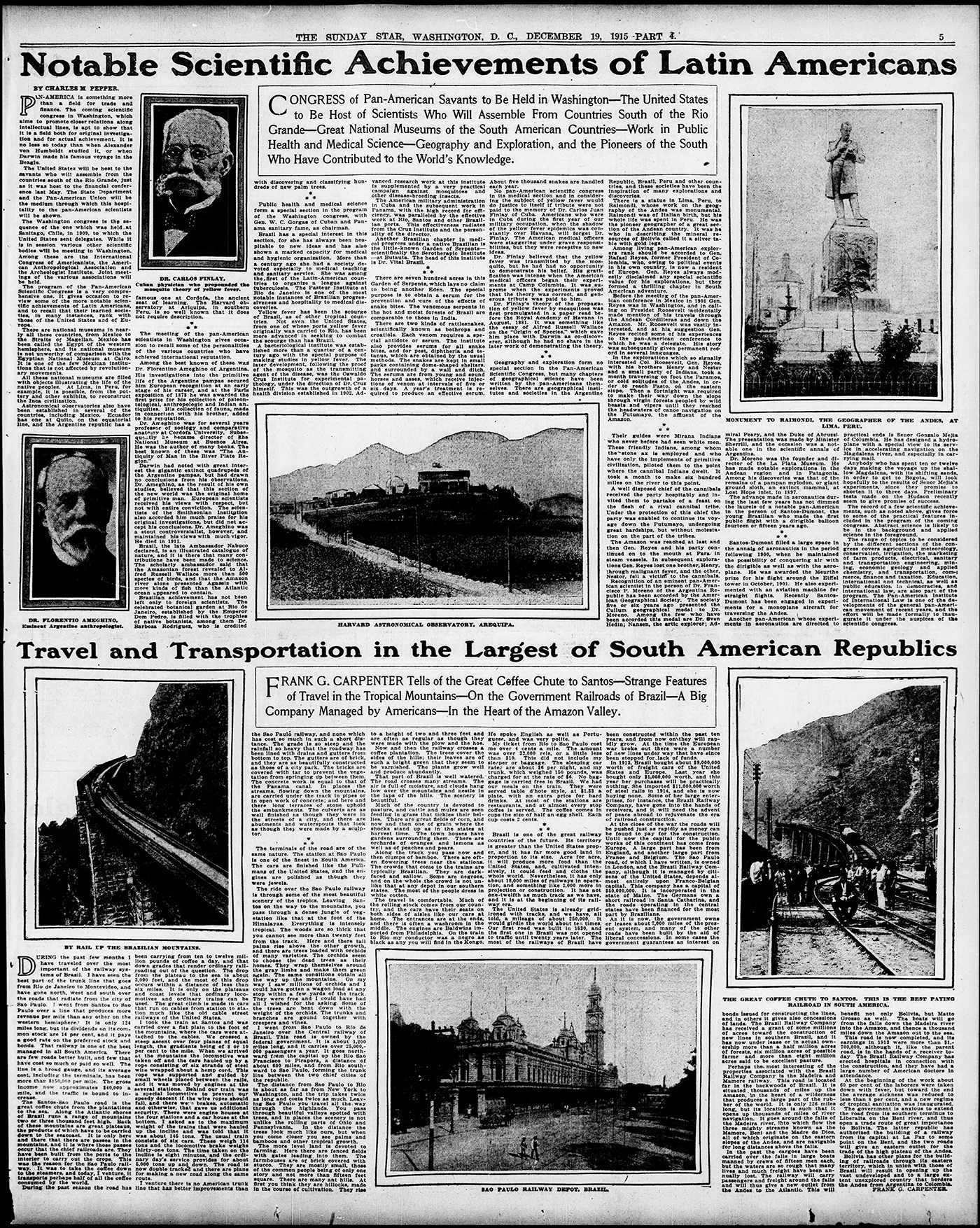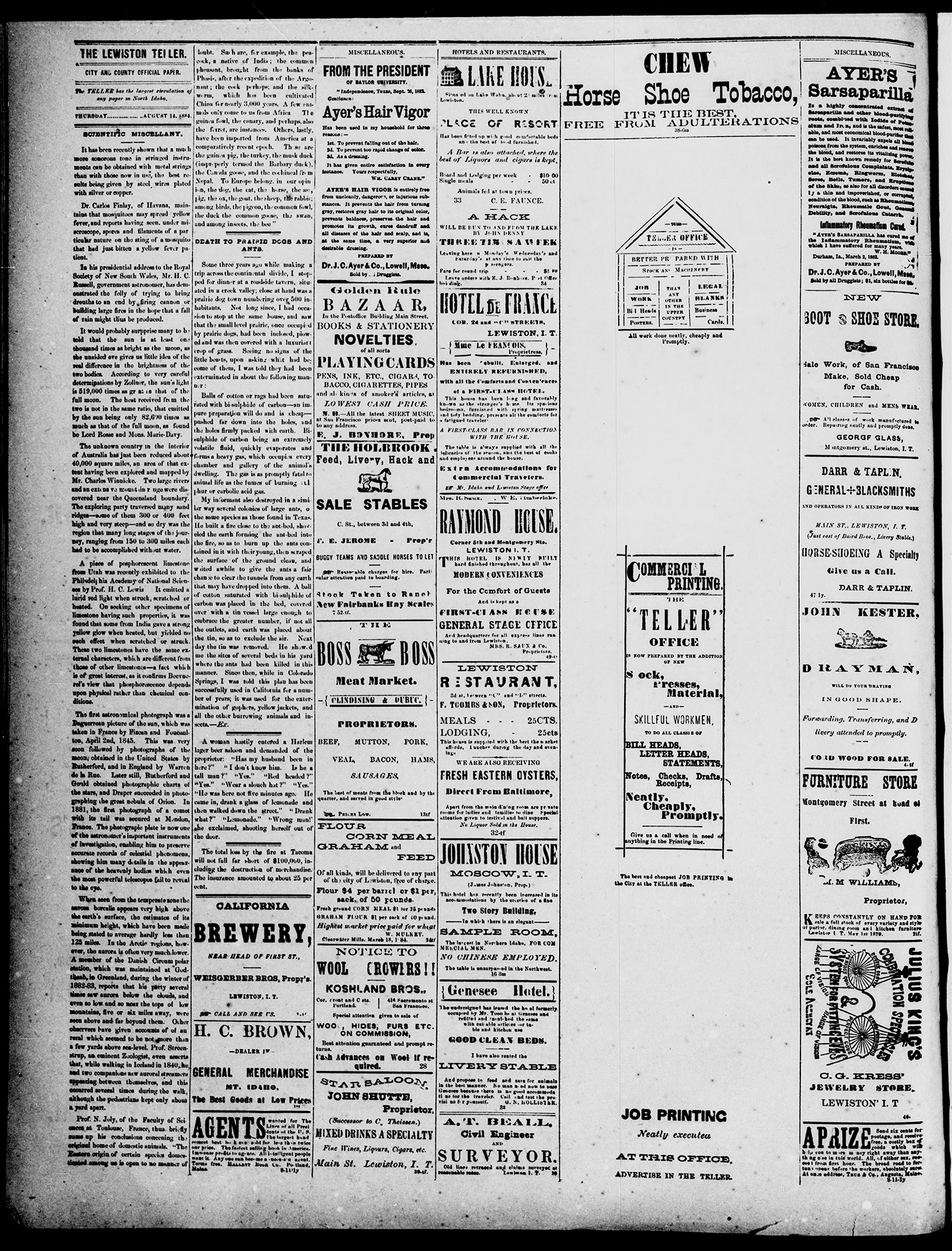Right to the Source
Discovering Carlos Finlay

At some point during a student’s academic career he or she is likely to learn about the impact of mosquito-borne illnesses such as yellow fever on the building of the Panama Canal or during the Spanish-American war. They learn that thousands of individuals died after contracting the disease, and that eventually a vaccine was created. Most students, however, are unaware that the person who determined that mosquitos transmitted yellow fever was Carlos Juan Finlay, a Cuban-born epidemiologist.
There may be a sentence or two in a textbook or a few paragraphs on a website about Finlay, but what if students want to learn more about this notable scientist? What if they could find primary sources that document this momentous discovery or provide biographical details on this important figure in history—or others? Historic newspapers can provide such information as well as context to help students understand the impact of an event at the time it took place, and the roles played by individuals who are often not often featured in textbooks.
By the 1890s the fact that Yellow Fever is caused by a virus that is transmitted by mosquitos had been proven. However, newspaper articles carried Finlay’s hypothesis decades earlier. In fact, even the “Scientific Miscellany” column of the August 14, 1884 edition of the Lewiston Teller (ID) stated, “Dr. Carlos Finlay, of Havana maintains that mosquitos may spread yellow fever.”
And long after Finlay’s hypothesis had been proven, the Sunday, December 18, 1915, Washington Star featured information about, and a photograph of, Finlay. It explained that the Pan-American Scientific Congress to be held in Washington, D.C., a few weeks later, gave occasion “to recall some of the personalities of the various countries who have achieved international reputation.”
This gathering, sponsored by the State Department and the Pan American Union, provided an opportunity for scientists and other scholars to discuss important issues relating to all aspects of the sciences and encourage closer connections between the American republics in the areas of education and scholarship. The article entitled “Notable Scientific Achievements of Latin Americans,” not only celebrated Finlay, but also documented the work of other notable Latin American scientists, including Dr. Florentio Ameghino, an Argentinian anthropologist and zoologist, Barbosa Rodriguez, a Brazilian botanist, and Alberto Santos–Dumont, a Brazilian inventor and aviation pioneer. An article such as this can provide a valuable list of search terms that can lead students to make their own discoveries about science and scientists, and expand their sense of the larger scientific community.

Related Student Explorations
- Yellow Fever
- Mosquito-borne illnesses
- Carlos Juan Finlay
- Latin American/Hispanic/Latinx Scientists
About the Source
The newspaper articles featured here can be found on the Chronicling America website at https://chroniclingamerica.loc.gov/lccn/sn82007023/1884-08-14/ed-1/seq-4/ and https://chroniclingamerica.loc.gov/lccn/sn83045462/1915-12-19/ed-1/seq-57/, respectively. Chronicling America is a collaboration between the Library of Congress and the National Endowment for the Humanities that provides access to literally millions of historic newspapers from across the country (See: https://chroniclingamerica.loc.gov/). Of special interest are newspapers created for and documenting activities in various immigrant or ethnic communities including African-American, Spanish, German and Native American.
Students may not only find information on notable scientists, engineers, pilots and mathematicians, they will also find slice of life articles about people creating a new invention, trying a new technique or succeeding at a specific event. If students need guidance, there is a collection of recommended topics that will lead them to specific articles and also provide search terms if they want to find additional articles on a particular topic. The Headlines and Heroes blog (https://blogs.loc.gov/headlinesandheroes/) and twitter feed (@ChronAmLOC) supported by the Chronicling America staff can further help students find resources of interest.
Danna Bell (dbell@loc.gov) is an Educational Resources Specialist at the Library of Congress.
Inclusion Literacy Multicultural High School


